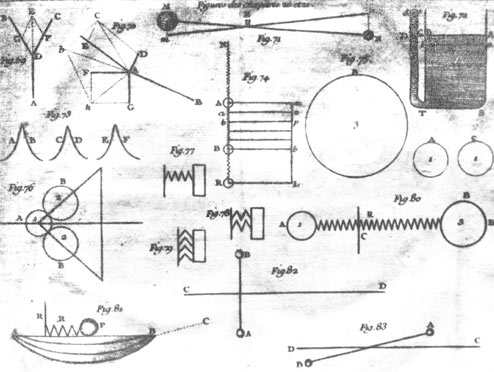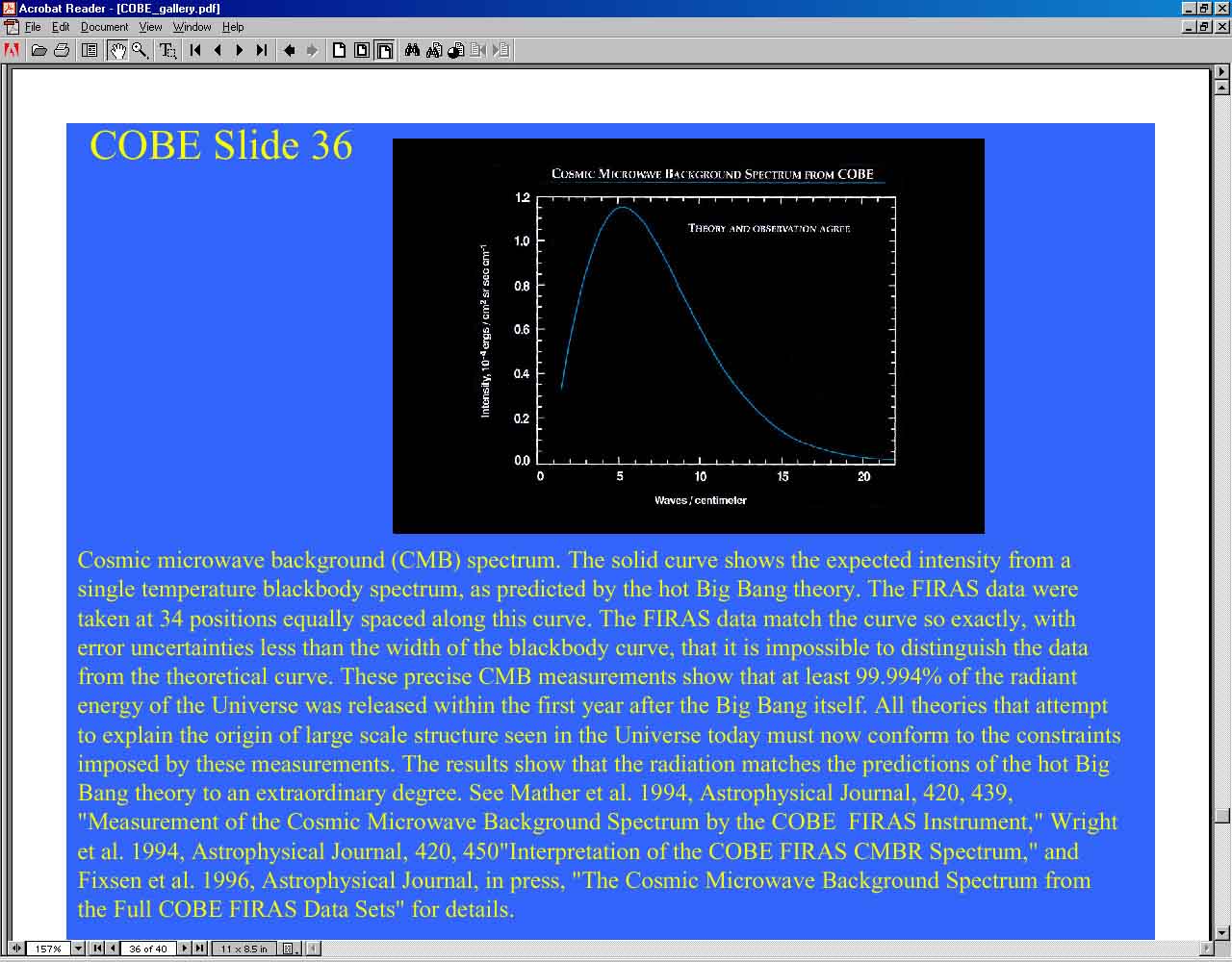 Author
Author
|
Topic: e=mc^2 (Read 1212 times) |
|
Hermit
Archon
    
Posts: 4287
Reputation: 8.94
Rate Hermit

Prime example of a practically perfect person
 
|
 |
e=mc^2
« on: 2009-09-27 17:12:21 » |
 |
1905-09-27 The physics journal Annalen der Physik published Albert Einstein's fourth Annus Mirabilis paper "Does the Inertia of a Body Depend Upon Its Energy Content?", which introduced the equation E=mc².
Source: PBS
A famous cartoon shows Einstein at a board, trying out one possibility after another: E = mc1, E = mc2, E = mc3.... But he didn't really do it that way, arriving at the squaring of c by mere chance, of course. So why did the conversion factor turn out to be c2?
The story of how an equation with a "squared" in it came to be plucked from all other possibilities takes us to France in the early 1700s—to a woman who, in her outspoken brilliance, was out of step with her time.
Emilie du Châtelet (1706-1749)
As a girl, Emilie de Breteuil lived with her family overlooking the Tuileries gardens in Paris, in an apartment with 30 rooms and 17 servants. But although her brothers and sisters turned out as might be expected, Emilie was different, as her father wrote: "My youngest flaunts her mind, and frightens away the suitors."
Despite her father's fears, Emilie had many suitors. At the age of 19, she chose one of the least objectionable courtiers as a husband. He was a wealthy soldier named du Châtelet who would conveniently be on distant campaigns much of the time. It was a pro forma arrangement, and in the custom of the time, her husband accepted her having affairs while he was away.
When she was a 27-year-old mother of three, du Châtelet began perhaps the most passionate affair of her life—a true partnership of heart and mind. Her lover, the writer Voltaire, recounted later, "In the year 1733 I met a young lady who happened to think nearly as I did." She and Voltaire shared deep interests: in political reform, in the fun of fast conversations, and, above all, in advancing science as much as they could.
Correcting Voltaire and improving on Newton
Together, du Châtelet and Voltaire turned her husband's château at Cirey, in northeastern France, into a base for scientific research with a library comparable to that of the Academy of Sciences in Paris, as well as the latest laboratory equipment from London.
When they engaged in their teasing, mock battling, it wasn't the case of a widely read man deciding when to let his young lover win. Du Châtelet was the real investigator of the physical world, and the one who decided that there was one key question that had to be turned to now: what is energy?
Most people felt energy was already sufficiently understood. Voltaire had covered the seemingly ordained truths in his own popularizations of Newton: an object's energy is simply the product of its mass times its velocity, or mv1. If a five-pound ball is going 10 mph, it has 50 units of energy. But du Châtelet knew there was a competing, albeit highly theoretical view proposed by Gottfried Leibniz, the great German natural philosopher and mathematician. For Leibniz, the important factor was mv2.
A weighty test
Du Châtelet and her colleagues found the decisive evidence in the recent experiments of Willem Gravesande, a Dutch researcher who'd been letting weights plummet onto a soft clay floor. If the simple E = mv1 was true, then a weight going twice as fast as an earlier one would sink in twice as deeply. One going three times as fast would sink three times as deep. But that's not what Gravesande found. If a small brass sphere was sent down twice as fast as before, it pushed four times as far into the clay. It if was flung down three times as fast, it sank nine times as far into the clay.
Du Châtelet deepened Leibniz's theory and then embedded the Dutch results within it. Now, finally, there was a strong justification for viewing mv2 as a fruitful definition of energy.
End of a partnership
Du Châtelet was one of the leading interpreters of modern physics in Europe as well as a master of mathematics, linguistics, and the art of courtship. But there was one thing she couldn't control. In April of 1749, she wrote to Voltaire, "I am pregnant and you can imagine ... how much I fear for my health, even for my life ... giving birth at the age of forty." She didn't rage at the clear incompetence of her era's doctors; she just said to Voltaire that it was sad leaving before she was ready.
She survived the birth the next fall, but infection set in, and within a week she died. Voltaire was beside himself: "I have lost the half of myself—a soul for which mine was made."
Einstein's new take on an old formula
Over time, physicists became used to multiplying an object's mass by the square of its velocity (mv2) to come up with a useful indicator of its energy. If the velocity of a ball or rock was 100 mph, then they knew that the energy it carried would be proportional to its mass times 100 squared. If the velocity is raised as high as it could go, to 670 million mph, it's almost as if the ultimate energy an object will contain should be revealed when you look at its mass times c squared, or its mc .
This isn't a proof, of course, but it seemed so natural, so "fitting," that when the expression mc2 did suddenly appear within Einstein's more detailed calculations, it helped make more plausible his startling conclusion that the seemingly separate domains of energy and mass could be connected, and that the symbol c—the speed of light—was the bridge.
This plate of diagrams is from du Châtelet's "Institutions physiques", her elaboration on the ideas of Leibniz. She finished a major commentary on Newton just before her death.
|
With or without religion, you would have good people doing good things and evil people doing evil things. But for good people to do evil things, that takes religion. - Steven Weinberg, 1999

|
|
|
Walter Watts
Archon
    
Gender: 
Posts: 1571
Reputation: 8.89
Rate Walter Watts

Just when I thought I was out-they pull me back in
  
|
 |
Re:e=mc^2
« Reply #1 on: 2009-09-27 20:53:03 » |
 |
Quote from: Hermit on 2009-09-27 17:12:21
<snip>
A weighty test
Du Châtelet and her colleagues found the decisive evidence in the recent experiments of Willem 'sGravesande, a Dutch researcher who'd been letting weights plummet onto a soft clay floor. If the simple E = mv1 was true, then a weight going twice as fast as an earlier one would sink in twice as deeply. One going three times as fast would sink three times as deep. But that's not what 'sGravesande found. If a small brass sphere was sent down twice as fast as before, it pushed four times as far into the clay. It if was flung down three times as fast, it sank nine times as far into the clay.
Du Châtelet deepened Leibniz's theory and then embedded the Dutch results within it. Now, finally, there was a strong justification for viewing mv2 as a fruitful definition of energy.
<snip>
|
Interesting post Hermit.
Thanks.
One of the many great "Aha! moments" in the history of science.
Walter
PS
Another great "Aha! moment":

|
Walter Watts
Tulsa Network Solutions, Inc.
No one gets to see the Wizard! Not nobody! Not no how!
|
|
|
|




